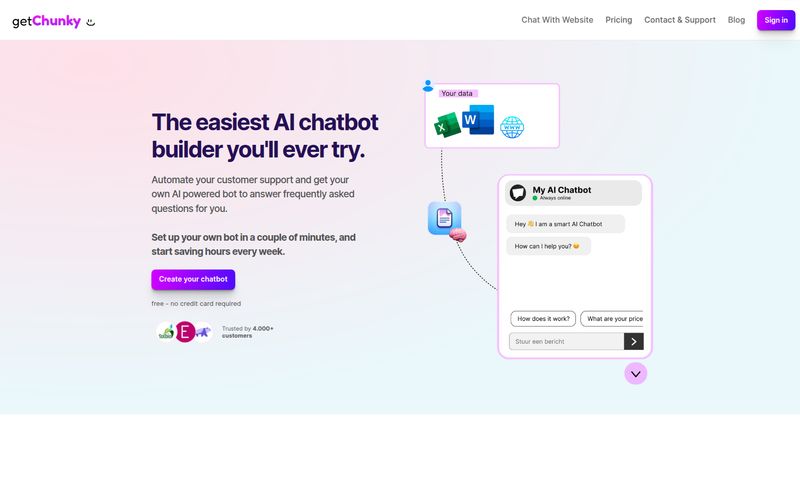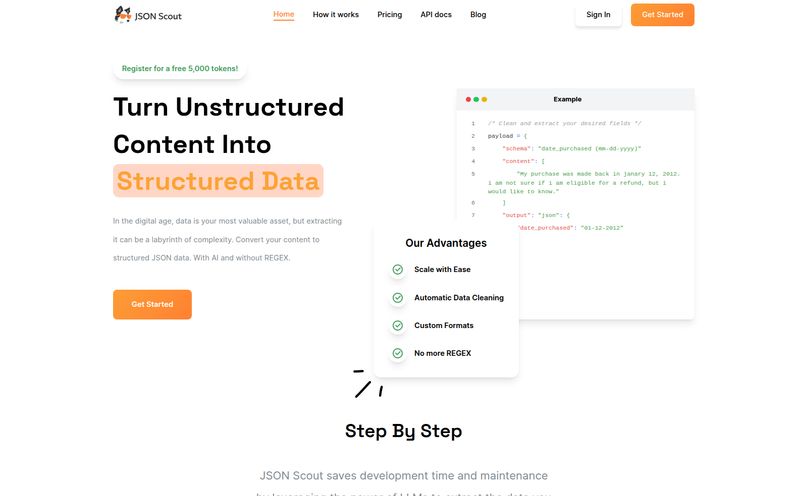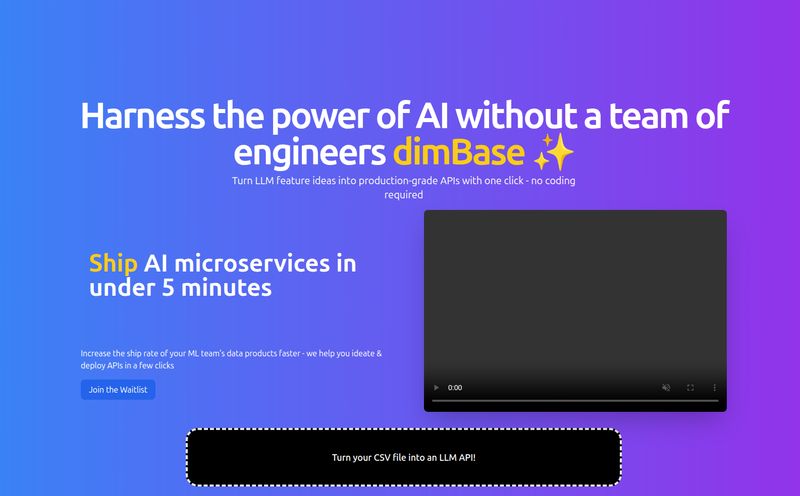As a business owner or marketer, you begged for customer feedback. You put up signs, sent out emails, maybe even offered a free cookie for a review. And it worked! Now you have hundreds, maybe thousands, of reviews across Google, Yelp, Trustpilot, and who knows where else. The problem? You're drowning.
It's a classic case of being careful what you wish for. Buried in that mountain of text is pure gold: game-changing suggestions, urgent complaints you need to fix yesterday, and glowing testimonials you could turn into marketing magic. But who has the time to manually read every single one, categorize it in a spreadsheet, and try to spot trends? I sure don't. My eyes glaze over after the tenth review mentioning "great service but the music was too loud." It feels like trying to find a specific needle in a giant, chaotic haystack.
For years, we've just accepted this as the cost of doing business. But with the recent explosion in accessible AI, I've been on the lookout for a tool that can act as a translator—something that turns that raw, messy customer voice into powerful, easy-to-understand insights. I think I might have found a serious contender: Feedback Navigator.
What is Feedback Navigator, Anyway?
So what is this thing? In short, Feedback Navigator is an AI-powered platform designed to do the one thing you don't have time for: it reads and analyzes all your user feedback for you. It's built for the people in the trenches—the hotel managers, the restaurant owners, the product teams—who need to know what customers are really saying without spending their entire week doing it.
It pulls in feedback from all the usual suspects like Booking.com and Yelp, or you can just upload a CSV file if you have your own data. Then, its AI gets to work, sorting everything into neat, insightful dashboards in just a few minutes. It's less about raw data and more about getting to the point. Fast.

Visit Feedback Navigator
The Core Features: More Than Just a Word Cloud
I've seen a lot of 'analytics' tools that just spit out a pretty but useless word cloud. You know the type. Feedback Navigator goes a few steps further, which is what caught my eye.
It Hooks Right Into Your Data Sources
One of my biggest pet peeves is a tool that makes you do all the work. The fact that Feedback Navigator has built-in data sources is a huge win. You can connect it directly to platforms like Trustpilot, Booking.com, and Yelp. This means no more manually copy-pasting reviews or wrestling with complicated APIs. For those of us with data in other places, the simple CSV file upload or the API option is a great fallback. It's about reducing friction, and I'm here for it.
AI-Powered Sentiment Analysis and Request Detection
This is the secret sauce. The AI doesn't just read the words; it understands the feeling behind them. This is sentiment analysis. It can tell you if a review is positive, negative, or neutral, not just overall, but for specific categories you care about. So you can see that customers love your new menu (positive) but feel the delivery time is too slow (negative).
"Understanding sentiment is critical. For local SEO, Google is increasingly looking at the quality and sentiment of reviews, not just the quantity. A tool that helps you pinpoint and fix negative trends can have a direct impact on your rankings."
Even cooler, in my opinion, is the request detection. The AI actively looks for suggestions and feature requests. Think about it: your customers are literally giving you a product roadmap for free! This is invaluable for any product team or business owner looking to innovate based on actual user demand.
Custom Categories and Workflows
The platform isn't a black box. You're not stuck with its pre-defined ideas. You can create your own custom categories. For a restaurant, that might be "Food Quality," "Ambiance," and "Staff Attitude." For a SaaS product, it could be "UI/UX," "Pricing," and "Feature Bugs." This customisation makes the insights a thousand times more relevant to your business.
And for the tech-savvier folks, the inclusion of webhooks is a brilliant touch. This means you can create custom workflows. For example, you could set it up to automatically send a notification to your Slack #support channel every time a new review with a negative sentiment is detected. That's not just analysis; that's turning insight into immediate action.
When You Need to Go Deeper: CSV Export
As much as I love a good dashboard, sometimes you need to get your hands dirty with the raw data. Feedback Navigator gets this. With a single click, you can export your analyzed data as a CSV. This lets you pull it into Excel, Google Data Studio, or whatever your favorite analysis tool is. It shows a confidence in their product—they're not trying to lock your data in. A very respectable move.
Who is This Actually For? (Hint: Probably You)
The website lists a few key use cases, and they all make perfect sense.
- Property and Hotel Managers: Imagine instantly knowing the most common complaints and praises across all your Airbnb or Booking.com listings. You could spot a recurring issue with a specific room's plumbing before it becomes a multi-thousand-dollar problem.
- Restaurant and Gym Owners: You're juggling a million things. This tool can automate the scraping of Google Reviews and Yelp, alerting you to what people are saying about your new lunch special or the cleanliness of the locker rooms, helping you react promptly.
- Product Teams: Instead of a messy backlog of user feedback tickets, you get a centralized, analyzed stream of feature requests and pain points. It's a direct line to your user's brain.
- Consultants: For SEOs and marketing consultants like myself, this is a powerful tool to bring to a client. It allows you to provide data-backed recommendations for improving their service, which in turn boosts their online reputation and traffic.
Let's Talk Money: The Pricing Breakdown
Okay, the all-important question: what's it gonna cost? Feedback Navigator offers a pretty flexible pricing structure with both monthly subscriptions and one-time credit packs. The core currency is "credits," where 1 credit is used each time one piece of user feedback is analyzed.
First off, there's a Free Trial that gives you 100 credits. This is perfect for kicking the tires and seeing if it works for your data.
| Plan Type | Plan/Pack Name | Credits Included | Price |
|---|---|---|---|
| Subscription | S Plan | 1,000 credits/month | $15/month |
| Subscription | M Plan | 2,500 credits/month | $25/month |
| Subscription | L Plan | 5,000 credits/month | $50/month |
| One-time | S Pack | 1,000 credits | $39 |
| One-time | M Pack | 2,500 credits | $79 |
| One-time | L Pack | 5,000 credits | $149 |
| One-time | XL Pack | 10,000 credits | $249 |
| One-time | XXL Pack | 25,000 credits | $499 |
| One-time | XXXL Pack | 50,000 credits | $899 |
I appreciate the two options. The subscriptions are great for ongoing monitoring, while the one-time packs are ideal for a single deep-dive project, like analyzing a year's worth of historical feedback. The pricing itself seems pretty reasonable, especially for the time it saves.
The Good, The Bad, and The AI
No tool is perfect. For all its strengths, there are a couple things to keep in mind. The biggest pro is the sheer speed to insight. What would take a human days of tedious work, it does in minutes. It’s a fantastic way to democratize data analysis for smaller teams who can't afford a dedicated data scientist.
On the flip side, the credit-based system means you're always aware of consumption. This isn't necessarily bad, but it's a consideration. The main caveat, and this applies to any AI tool, is that its not infallible. AI can sometimes miss sarcasm or nuanced cultural references. I once saw an AI flag a review saying "The service was so good, it was criminal!" as negative. So, it's always smart to use this as a powerful first pass, with a human doing a final spot-check on the most critical insights.
My Final Take
So, is Feedback Navigator worth it? In my professional opinion, absolutely. It solves a real, painful problem for a huge number of businesses. It bridges the gap between having tons of customer data and actually understanding it. It’s not a magic wand that will run your business for you, but it’s an incredibly powerful compass, pointing you directly toward what your customers care about most.
If you're feeling overwhelmed by your reviews and feedback, I'd strongly suggest giving the 100-credit free trial a spin. You might be surprised by the gold you uncover.
Frequently Asked Questions (FAQ)
1. What is Feedback Navigator in simple terms?
It's an AI tool that reads all your customer reviews and feedback from various platforms, then organizes the information into simple dashboards. It tells you what customers like, what they dislike, and what they're asking for, saving you hours of manual work.
2. How does the credit system work?
It's quite simple: 1 credit is used to analyze 1 piece of feedback (like a single review). You can buy credits in monthly subscription plans or as one-time, non-expiring packs.
3. Can I use my own data with Feedback Navigator?
Yes. While it has direct integrations with platforms like Yelp and Trustpilot, you can also upload your own data using a CSV file or connect via their API for more custom solutions.
4. What platforms can it pull reviews from directly?
The platform has built-in data sources for major review sites like Trustpilot, Booking.com, and Yelp, with more likely to be added over time.
5. Is there a free trial for Feedback Navigator?
Yes, you can sign up for a free trial that includes 100 credits, allowing you to test the platform with your own data before committing to a paid plan.
6. Is the AI analysis 100% accurate?
It's very accurate, but no AI is perfect. It excels at identifying broad trends, sentiment, and common requests. However, for highly nuanced or sarcastic comments, a final human review is always a good practice.
Reference and Sources
- Feedback Navigator Official Pricing Page
- The Complete Guide To Google Reviews - Search Engine Journal



